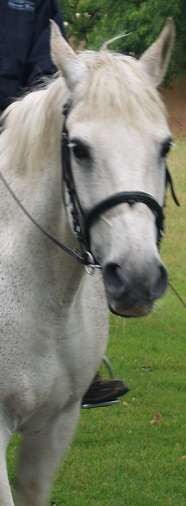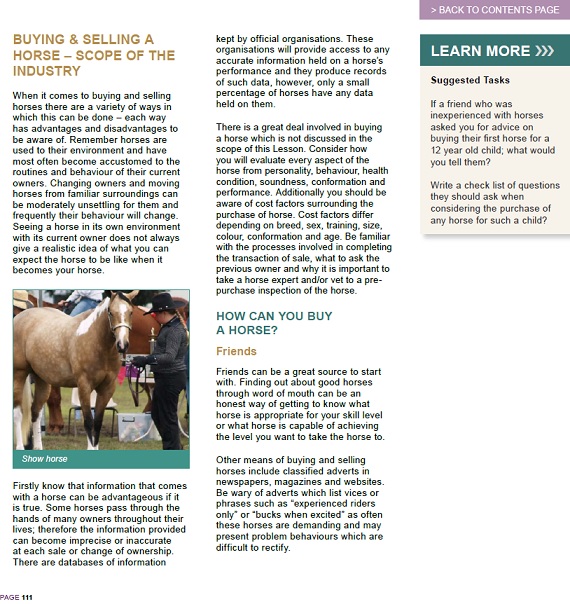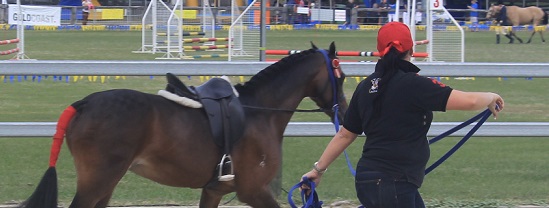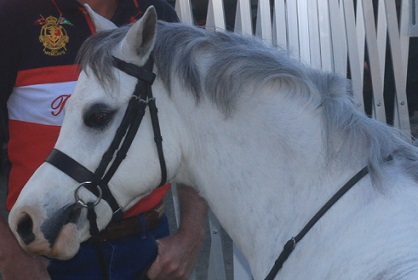Sneak Peek
Caring for Horses
A 20 hour short course in the essentials of caring for horses. This online course is ideal for people who are new to caring for horses and need to know the basics of horse care.
Whether you are purchasing your own horse or considering a new career working with horses, this course is an ideal place to start. Ensuring that you are taking proper care of your horse is important for optimal health and a content friend. There are so many important factors that you need to consider for taking care of horses and this course will help you on your way to a rewarding and healthy relationship caring for horses.
You can pace yourself with this course. Take your time, or study quickly, it is completely up to you. There are online tests and also further research that you can do along the way. If you need assistance or have questions, you can also contact our tutor email who will guide you in the right direction. You can test how you have progressed with a final online exam.
The Lessons
Lesson 1 BREEDS AND IDENTIFICATION
Introduction
Breeds
Sports Horse
Light work horse
Draught horse
Driving horse
Andalusian, American quarter horse,Warnblood, Appaloosa, Arab, Belgian draught, Cleveland bay, Clydesdale, Friesian, Hackney,Hanoverian, Morgan, American paint & pinto, Paso fino, Percheron, Shire, Standardbred, Tennessee walking horse, Thoroughbred, Trakehner.
Horse identification characteristics - height, sex, colour, head makings
Leg markings, Whorls
Additional identification methods - microchips, hot iron branding, freeze branding, lip tattoo
Lesson 2 ANATOMY, PHYSIOLOGY AND MOVEMENT
External Points of the Horse. - muzzle, chin groove, poll, throat latch, crest, withers, back, loins, croup, thigh, buttock, etc
Skeletal and muscular Systems
Cardiovascular System
Pulse rate
Conformation
Movement - recognising gaits, leaps, walk, flat foot walk, trot and pace, canter, gallop
Lesson 3 DIGESTIVE SYSTEM AND FEEDING
Overview of Digestive System
Food
Roughage - Forage
Concentrates
Supplements
Feeding Routines and Procedures
Group feeding
Feeding times and frequency
Watering
Lesson 4 HORSE HANDLING
Basic Horse Psychology, Temperament and Behaviour.
Temperament types - quiet, Interested, nervous, extremely nervous, stubborn, treacherous
Common behaviours - dominance hierarchy, epimeletic behaviour, investigative behaviour, grooming behaviour, ingestion and elimination behaviours, play, minicry, sleeping, walking
Safe Handling
Catching and releasing
Leading
Tying up
Working around a horse
Bridling
Saddling
Vices and Problem Behavior - biting, cribbing, kicking, stall walking, tail rubbing, weaving, wood chewing, bolting, rearing and striking, shying, pulling
Handling a stallion for breeding
Lesson 5 HEALTH MANAGEMENT
Introduction to Horse Health
Behavioural signs
Superficial signs - coat condition, skin, sweating, discharges etc.
Respiration signs
Physical examination
Internal Parasites- types, effects, controls
Skin Conditions -ringwormnettle rask, mud fever, lice, melanoma, sarcoids, etc
Equine Colic - causes, signs, treatment, prevention
Lameness - signs, causes
Contagious Respiratory Conditions – Viruses, Bacteria, Parasites.
Non-Contagious Respiratory Conditions.
Preventative Health Care Programs - COPD, chronic post viral cough, exercise induced pulmonary haemorrhage, laryngeal hemiplegia, etc.
Veterinary investigations
Preventative health care programs
Lesson 6 SHOEING THE HORSE
Why do horses need shoes? - hoof anatomy
The shoeing process
Types of shoes - normal, race, heart bar, three quarter, featherhead, wedge heeled, studded
Steps in shoeing the horse
Accidents associated with shoeing
General Foot Care.
Lesson 7 CARE OF THE HORSE AT GRASS
Grazing Requirements
Field boundaries - types of fencing, gates, shelter
Suitable grasses
Poisonous plants to avoid
Grazing Management - daily, weekly and annual grass management
Feeding and watering a grass kept horse
Types of watering
Grooming a grass kept horse
Exercising a grass kept horse
Lesson 8 CARE OF THE STABLED HORSE
Stabling Facilities
American barn stabling
Traditional stabling
Stable fixtures and fittings
Stable Yard Safety -fire protection, etc.
Bedding & Mucking Out
Common bedding materials - wood shavings, wood pellets, straw, rubber matting, paper and cardboard
Bedding management
Mucking out
Feeding & Watering Overview
Grooming
Lesson 9 SADDLERY AND EQUIPMENT
Saddles
Parts of a Saddle
Saddle design
Bridles
Parts of an English Snaffle Bridle
Bite less bridles
Double bridles
Bits
Ancillary Equipment - martingales, breastplates
Lesson 10 THE EQUINE INDUSTRY
What Do People Do With Horses?
Buying & Selling a Horse
Hoe can you buy a horse - friends, auctions, trainers and rehabilitators, farms and breeders
Common Equine Careers - breeder, owner/ manager (riding school, agistment etc), riding instructor, trainer, therapist, professional rider, farrier, veterinary, equine retailer, etc
Final Assessment.
Final Assessment
The Caring for Horses short course will help you understand basic and all of the essentials of horse care.
This course can be a great platform for either caring for your own horse or for gaining valuable knowledge in equine care to start a career working with horses.

Support along the Way from Experts
You have access to expert
tutors through our student help desk all the time you are studying this
course. Our school maintains help desks in both of our offices -in
Australia and the UK; and has staff on duty five days a week manning
phones, online chat and emails. Any questions that you have about what
you are studying will be dealt with promptly (usually the same working
day, often immediately).
If there is something you read or research that you don't understand, ask for help.
If you want to learn more about something you encounter through these
studies, have a conversation with one of our faculty tutors
If you need direction to find more information, ask
If you need advice on moving forward with your work, career or studies
after the course ask. (Free career and business advice).

LEARN ABOUT DIFFERENT WAYS TO KEEP HORSES AND ALL THAT ENTAILS
There are three different ways of keeping horses:
- At grass - all day and night.
- Stabled all day and night except for brief exercise and/or grazing periods.
- The combined system a lengthy amount of time in both a stable and a paddock.
At Grass has it's Advantages
It is often thought that keeping a horse at grass is the easiest system to adopt. Although grass kept horses do not take up as much time as stabled horses, it certainly isn't simply a case of "throwing them into the paddock and forgetting about them"! Being at grass is natural for the horse when the size of the pasture is vast. Most modern grass kept horses, however, are restricted to small paddocks. The standard of management must be high to ensure that grass kept horses and their paddocks stay healthy.
Some types of horses are better suited to being at grass than others. The pony breeds do very well on poor pasture grazing whilst some thoroughbreds cannot tolerate the cold and wet, together with inadequate food supply associated with being out at grass. Breeding herds can do well at grass; the mare's milk production is stimulated whilst the youngsters benefit from the sunshine, fresh air and exercise. Horses that are not being worked for any length of time should be put out to grass to prevent boredom and stable vices occurring. Ponies are most healthy if kept at grass and are easier for the young owners to manage. Ponies can become very gassy (excitable) when stabled. In this lesson we are going to consider a horse who is kept at grass and is ridden regularly. Horses that are resting at grass will receive the same attention but will not be fed for work or groomed.
The Combined System may be Considered Better
The combined system is a very good way of keeping horses for the following reasons:
It is a happy compromise between the two extremes of keeping a horse at grass all the time (best for the horse) and keeping it stabled all of the time (best for the rider). The combined system works well for the horse and rider.
The horse's diet and exercise can be controlled. Although a grass kept horse is usually very healthy, he can only be used for gentle out rides and is not fit for fast, hard work. He is said to be in "soft condition". For a horse to be in "hard condition" or fit, he must be fed a high protein diet and undergo a well planned program of exercise. His access to grass where he will eat and exercise “at will” must be reduced.
The grazing can be conserved. Horses are greedy eaters and will graze what grass is available to them. To make the grazing go further it is a good idea to limit the number of hours grass is grazed. This is possible with the combined system.
Horses can be given shelter from extreme weather. Horses can withstand more cold than man and are quite comfortable in cold, dry weather. They suffer if it is very cold and wet, and also extreme heat. With the combined system, horses can be kept in when weather becomes too extreme.
Horses can be protected from biting insects. Flies can make horses very miserable, and can cause loss of condition (the horse loses weight). Some biting insects can transmit deadly diseases. Examples include Tick paralysis, Trypanosomiasis, African Horse Sickness, Equine Infectious Anaemia, Equine Viral Encephalomyelitis, Anthrax. With the combined system, horses can go out to graze when there is less threat from biting insects.
Horses can be protected from thieves. It is easier to protect horses against theft if they are stabled, watchdogs and alarms can be used.

WHO THIS COURSE MIGHT HELP?
- Anyone considering buying a horse
- Horse owners who have never studied them formally studied horse care
- People working or hoping to work in the equine industry
- People considering more extensive equine studies may use this as a taster course
- Graduates in animal sciences or agriculture who missed out studying horses may use this as a "filler" course to fill in knowledge they missed studying; or refresh knowledge they have forgotten.